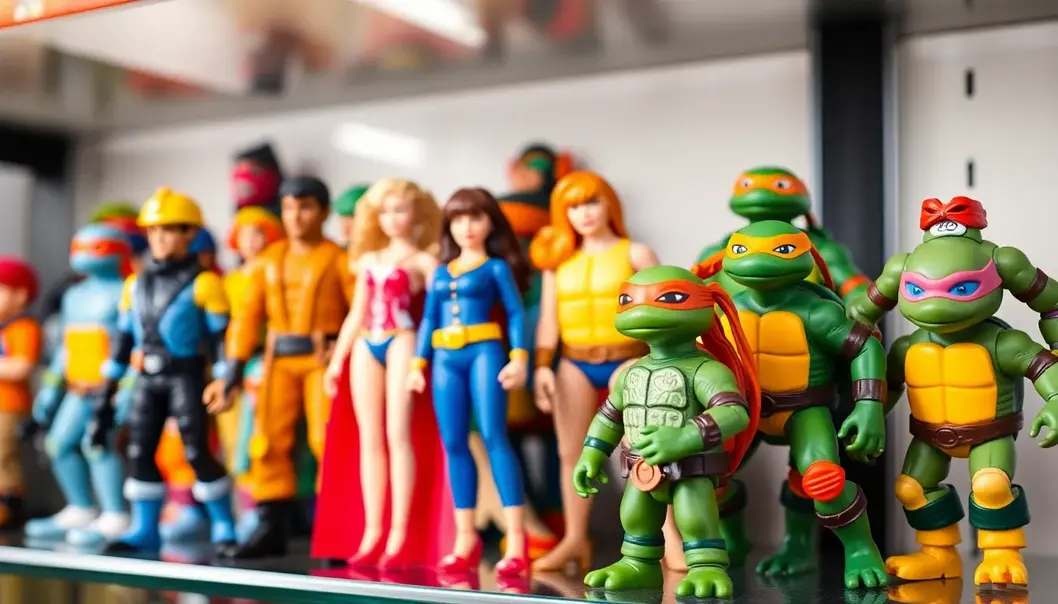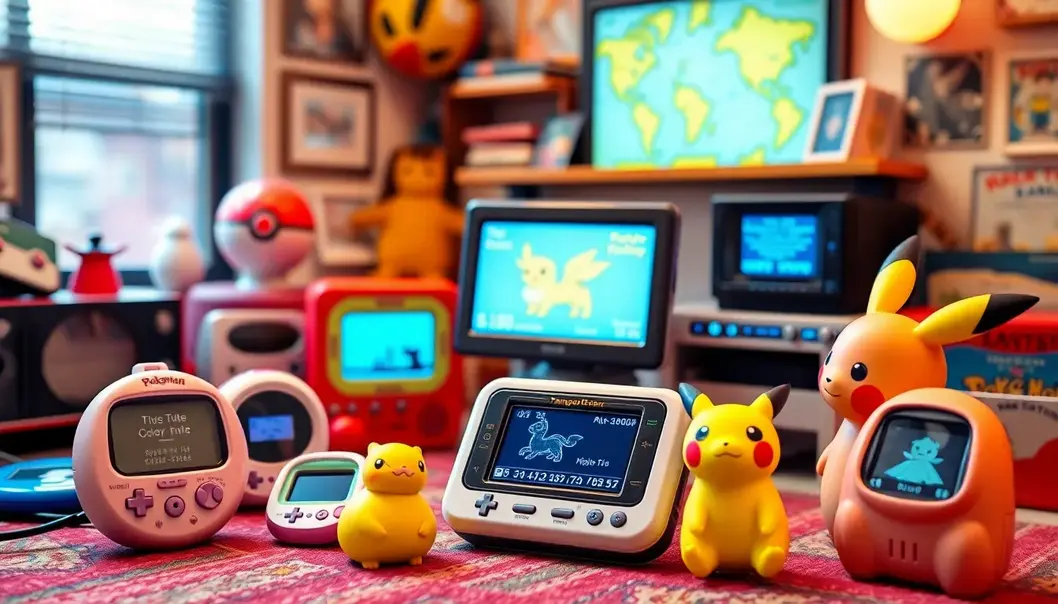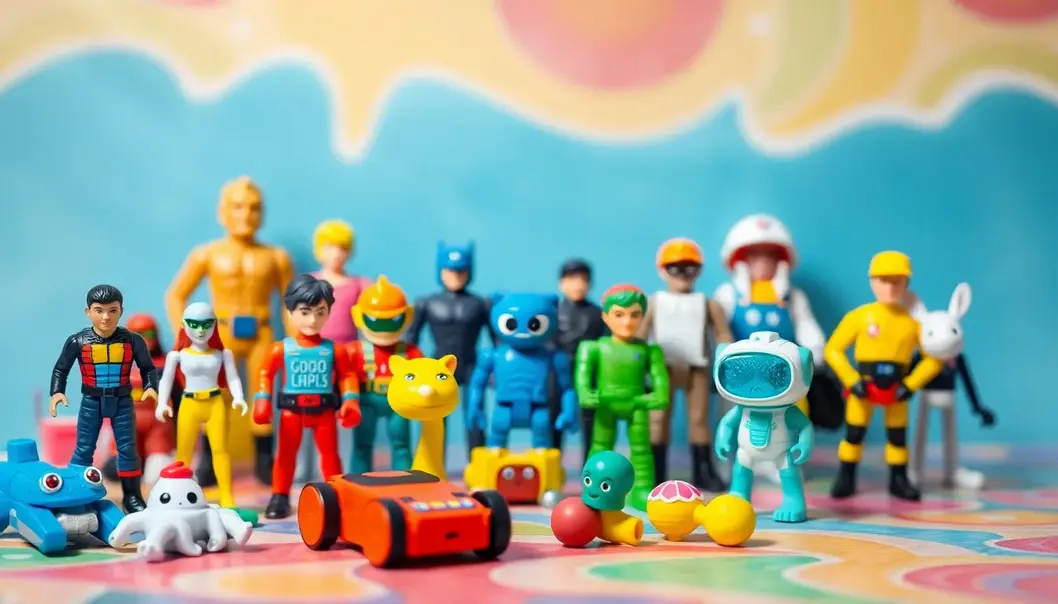The 1990s were a golden era for toy enthusiasts, with innovation and creativity at an all-time high. During this decade, several toy brands developed products that captured the imaginations of children worldwide, leaving an indelible mark on pop culture. For busy professionals interested in revisiting nostalgic childhood memories while understanding the cultural impact of these iconic toys, this overview provides a glimpse into the brands that helped shape a generation. From action figures to digital pets, the toys of the 90s transcended mere playthings to become essential components of growing up during this vibrant period.
The Reign of Action Figures

In the 1990s, action figures emerged as powerful symbols of childhood, dominating toy stores and capturing the imaginations of children worldwide. This era was particularly marked by the influence of several key brands that understood and harnessed the potential of storytelling through toys. Action figures allowed kids not just to witness stories unfold on screens but to actively participate in them, manipulating characters and creating adventures unique to their playrooms.
Among the leading figures was Hasbro’s G.I. Joe, a stalwart presence since the 1960s, adapted to fit the vibrant landscape of the 90s. The franchise expanded beyond its original military-theme roots to incorporate futuristic elements, embracing science fiction and fantasy narratives. This shift mirrored the decade’s evolving cultural taste, which favored complex storylines and crossover themes that resonated with children who were increasingly exposed to diverse media content.
Equally iconic was Mattel’s Barbie, a figure that, while diverging from the typical action hero mold, carved a profound niche in the action figure market. Barbie’s adventures in the 90s were limitless—each new line brought professions, international settings, and dreamlike scenarios to life. Her adaptability demonstrated a dynamic shift in gender roles, as girls were encouraged to explore roles beyond traditional expectations, embodying empowerment in their every imaginative endeavor.
No discussion would be complete without acknowledging the immense popularity of Playmates’ Teenage Mutant Ninja Turtles. These heroes-in-a-half-shell became a cultural phenomenon, uniquely positioned at the intersection of animated television success and action figure sales. The Turtles bridged the gap between cartoons and toys, drawing children into an enthralling universe filled with martial arts and humor, making them enduring favorites in schoolyards and living rooms.
The cultural relevance of these action figures lies in their ability to reflect and shape the hopes and ideals of the time. They were not merely static objects; they were vehicles for children to express creativity, replay narratives from popular media, or invent entirely new worlds. The impact of these toys extended beyond entertainment—they were tools for socialization and imagination, fostering skills such as storytelling, role-playing, and problem-solving.
Action figures in the 90s also represented a bridge between generations. Parents who once played with earlier versions of these toys found themselves revisiting familiar stories with their children, forming bonds over shared nostalgia. This intergenerational appeal added a layer of depth to their significance, ensuring these toys remained entrenched in popular culture.
Through brands like G.I. Joe, Barbie, and the Teenage Mutant Ninja Turtles, the legacy of action figures in the 90s is one that underscores the broader journey of play throughout the decades. These figures were not just a testament to innovative marketing but served as cultural touchstones in their own right, reminding us of an era where imagination was key, and storytelling knew no bounds.
Digital Pets and the Dawn of Virtual Play

As action figures dominated the 90s, another captivating form of play emerged: digital pets and virtual games. These innovations not only transformed how children played but also laid the groundwork for future digital interaction.
The introduction of digital pets marked a pivotal shift in the toy industry. The concept of nurturing a virtual creature resonated deeply, leading to the explosive popularity of these digital companions. With just a small plastic device, typically featuring a simple screen and a few buttons, children could tend to their virtual pets’ needs. Whether feeding, cleaning, or playing, these tasks were an essential part of daily routines, teaching responsibility and time management in an engaging form.
Among these digital companions, Bandai’s creation stood out. It quickly became a cultural phenomenon, capturing the fascination of millions worldwide. This virtual interaction made the concept of handheld digital play accessible and enticing, setting a benchmark for future toys and gadgets.
Simultaneously, another brand was pioneering a different kind of virtual adventure. Nintendo’s franchise introduced children to the immersive world of collecting and battling creatures. Groundbreaking in its scope, it blended elements of role-playing with strategic planning. Collectors were driven to explore, train, and compete with their digital critters, fostering community engagement and personal investment.
These developments were monumental in shaping future trends in gaming and entertainment. The social component, whether through battling or sharing virtual pets’ statuses, encouraged interpersonal relationships in digital spaces. This paved the way for multiplayer online games and social media interactions, elements which are fundamental to modern digital entertainment.
The 90s digital toy boom didn’t just influence gaming trajectories; it also informed the broader consumer electronics market. The demand for engaging, interactive experiences spearheaded the development of more complex gaming systems and portable devices, indicating a shift towards tech-driven leisure. It infused play with elements of patience and strategy, leaving a lasting imprint on how entertainment was consumed and perceived.
Reflecting on these innovations, one can’t underscore enough the foresight of these brands. They captured the zeitgeist of a decade enamored with technological advancement and, most importantly, they understood the evolving desires of a new, digitally-inclined generation. This chapter in toy history is, therefore, not just about play but about adapting to the digital frontier that would soon become integral to the 21st century.
Final words
The toys of the 90s were more than just playthings; they were cultural artifacts that shaped the childhood experiences of many. From action figures that inspired imaginative adventures to digital pets that introduced the first forms of virtual interaction, these toys laid the groundwork for future trends in entertainment and technology. For busy professionals who grew up during this vibrant time, these brands not only bring back nostalgic memories but also highlight the evolving landscape of play that continues to influence new generations.
Rediscover the toys that defined your childhood and explore how they shaped today’s entertainment landscape. Visit our curated toy collection.
Learn more: https://amazingtoys.com/90s-collection
About us
Amazing Toys specializes in offering a curated collection of nostalgic toys and memorabilia from the 1990s, allowing adults to revisit the joys of childhood while introducing new generations to the wonders of the past.

